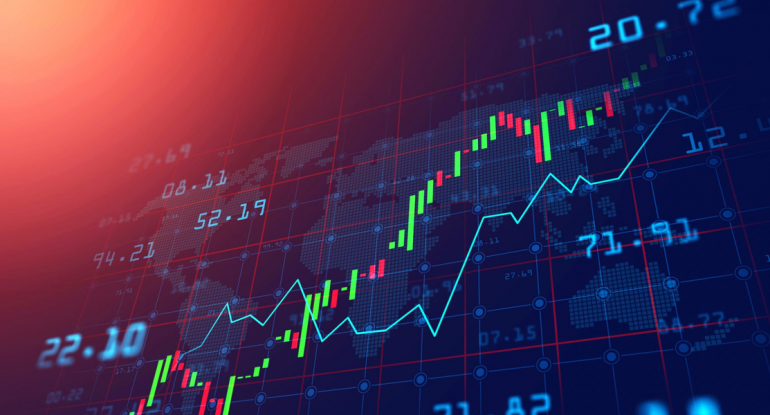Fundamental analysis vs technical analysis

Fundamental analysis vs technical analysis, which one is the best?
Traders in the financial markets whether forex, stocks or CFDs, of course, already know.
Both are ways traders approach the market to analyze whether prices will rise or fall.
But there are still many in the forex forum, discussing what is the best between technical analysis and fundamental analysis.
And the answer to each trader can vary, some say that technical analysis is better, but some say that fundamental analysis is better.
And in the end, it all will back to the experience of each trader in applying technical or fundamental analysis.
But this article will review both of them, with more specific expectations can benefit from trading activities.
Start trade with TenkoFX broker.
One of forex Brokers with positive feedback of reviews from users and are regulated by IFSC BelizeOpen an account or try Demo account.
Fundamental analysis
First, Fundamental Analysis is a market analysis by approaching and evaluating the conditions that underlie the price movement of an asset.
In stock trading, fundamental analysis is an analysis that refers to the company’s financial statements, balance sheets, income, and others that can be used to determine the performance of related companies.
Fundamental analysis in the context of forex analysis is an analysis with an approach to the observation and assessment of a country’s overall economic conditions.
Including factors such as interest rates, inflation, conditions of the manufacturing sector, employment, Gross Domestic Product (GDP), and others.
Fundamental analysis assumes that prices can get wrong, become too expensive or too cheap in the short term. However, sooner or later the price will return to the right level in accordance with its fundamental conditions.
Who uses fundamental analysis?
Usually, those who prefer to use fundamental analysis are investors, especially stock investors with long-term investment goals.
What needs attention in the fundamental analysis?
Fundamental analysis requires data to be analyzed.
Data can be obtained from various news, economic data, and financial reports released.
The stock analysis for fundamental analysis can be by looking for company news either through electronic media or other information related to the company issuing shares.
Usually, the company’s financial statement data is released by the issuer once every 3 months. You can visit each company’s website to get information.
In forex, usually, traders will see news related to the currencies traded by looking at the political economy conditions in a country where the currency is used.
There are many sites that provide economic calendar data such as Dailyfx, Forexfactory and so on.
How to do the fundamental analysis?
In the Fundamental Analysis, the trader carries out a top-down analysis starting from the economic conditions of the country at the macro-level to the condition of the company at a micro-level.
Macro Analysis to determine the overall economic condition of the country.
We need to look at whether the economy is still growing, inflation does not threaten growth, and so on.
The economy of a growing country will encourage the growth of companies.
Sectoral Analysis to determine the condition of each industry.
The trader needs to know what industry sectors have the most opportunities for growth.
Microanalysis to determine the condition of the company, by finding information to measure the company’s financial strength, by looking at financial statements.
What is the function of fundamental analysis?
Fundamental Analysis has several uses in stock investments, including
- Detect the right time to enter or exit the stock market or forex
- Help choose stocks or pairs that are good for investment.
Knowing how the country’s economic condition, we can decide when we have to invest.
And by analyzing the industry and finance of companies or countries we can avoid companies or countries that are fundamentally weak.
Fundamental analysis of the pros and cons
Pros
- Fundamental analysis provides a clearer mirror of the condition of the company or country because what is analyzed is the condition of the company or country.
- Fundamental analysis is more likely to have a long-term effect, investors are more inclined to fundamental analysis for long term investment.
- It can avoid stocks or pairs that perform poorly and are less profitable because the fundamental analysis does in-depth research.
Cons
- It requires a lot of data to be able to describe the overall condition of the company or country.
- Sometimes it’s confusing especially beginners because some data might be quite opposite from one negative side on the other positive.
- This is not a simple method of analysis, because it requires the intelligence to translate all data into one correct decision.
Technical analysis
What is technical analysis?
Technical analysis is one way for traders to approach the market based on past price history to get a picture of future price movements.
In technical analysis only by looking at historical prices in the timeframe to predict future price movement trends.
In technical analysis, many traders feel that they do not need data to do fundamental analysis.
With a different mindset from fundamental analyst thinking.
Traders who are based on technical analysts believe that past prices have the ability to improve current price movements and that current price moves are the attitude of investors in that direction.
Or in other words that history will repeat itself.
Technical analyst traders rarely look or pay attention to the economic performance of a country or company.
They are more interested in knowing about the performance of price movements that they can directly see through the chart.
They focus on historical price charts and also predict the volume of prices traded.
So typically, a technical analyst puts more emphasis on knowing how to price in the next hour, day, or week.
They don’t have long-term plans to keep investing.
So most of them do short-term trading, but they can do more transactions than fundamentalist traders.
Who uses technical analysis?
Technical analysis is the type of analysis that many traders use.
Even the fundamentalist traders or their professional traders also use this technical analysis.
As a comparison and see whether the current price is considered the best to enter the market.
The point is they have got a picture with fundamental analysis, that whether he will buy or sell.
Well to determine this they look back to the chart if he will buy it will look for prices at a low point.
And if want to sell they will look for prices at a high point, adjusting the fundamental direction.
But many beginners who prefer technical analysis because this is a simple and direct way of dealing with market situations through price charts.
How to do the technical analysis?
The way to trade with technical analysis is to study price behavior by taking into account various support and resistance factors as basic analysis.
Support and resistance are price zones where there is a strong obstacle in the area that prices are difficult to break.
During its development technical analysis has not only using candlesticks patterns but has evolved using trading indicators.
The most popular technical indicators used as a tool are also similar, for example, Moving Average, MACD, Relative Strength Index (RSI), and Stochastic Oscillator indicators.
Although basically technical analysis can be done in a simple way.
But each indicator has different functions and rules in applying it as a technical analysis tool, the trader must study each indicator to get how to use the indicator.
What function of technical analysis?
Technical analysis has the functions of which are included below.
- It provides a more detailed picture of prices by looking at the price history.
- With a low timeframe, traders can determine the best price with the help of support and resistance.
- Good accuracy for short-term trading.
Technical analysis is dealing directly with the data graph, he will be able to read past price history for a description of the lowest and highest prices.
When a trader has determined the direction of a long-term trend whether bullish or bearish, by looking at a low timeframe, he will be able to determine the best price to enter the market.
Short-term traders prefer to use technical analysis rather than fundamentals because short-term targets are often without fundamental influence.
Technical analysis pros and cons
Pros
- Face directly with the price chart, so more clearly know the details of current price movements.
- Technical analysis is simple, believing that market patterns will repeat themselves, traders can make decisions just by looking at the price history.
- Suitable for scalping, intraday traders.
- There are many methods of analysis, with many indicators to choose from, the simplest way is to price action.
Cons
- Not suitable for long-term analysis which is heavily influenced by economic issues..
- The appearance of the repainting indicator gives a false signal.
- When there is market turmoil after high impact news, this cannot work properly.
Fundamental analysis vs technical analysis which is better?
Mastering one method of analysis requires experience, fundamental analysis vs technical analysis what is better?
So to determine which is the best of both methods of analysis will depend on the experience of each trader and how he can understand market conditions.
When the trade focuses on technical analysis it will learn and apply to find out the advantages and disadvantages of this method.
So that through evaluation it will find a better way to improvise the way to trade better.
And a trader who focuses on fundamental analysis, he will learn various aspects as a supporter of trading decisions and see the results.
With a higher percentage of winning, trades will certainly lift the confidence that fundamentals are better than technical.
Whereas the best way is to study both technical and fundamental analysis, this will make evaluation easier, looking at the technical and fundamental side.
In summary, if a trader prefers a simpler way, and makes trading simpler, then the technical analysis is the best option.
But if the trader likes the challenge of understanding the market deeper, then the best is fundamental analysis.
FAQ
1. What is the difference in fundamental analysis vs technical analysis?
Fundamental analysis is a more market approach for long-term investment.
While technical analysis is an analysis of the market approach for short-term investment.
2. What is included in the fundamental analysis?
Fundamental analysis is a way of analyzing the intrinsic value of an asset by analyzing what factors can affect the price of assets in the future.
The state economic news and or company financial reports are included in the fundamental analysis.
3. What is a fundamental approach?
A Fundamental Approach is a way of analyzing by identifying an asset that is too high and undervalued.
An undervalued stock or asset is that the price is considered too low and will eventually recognize the mistake so that the price will be pushed upward towards its true value.
4. What do you mean by technical analysis?
Technical Analysis is a market analysis approaching future financial price movements based on an examination of past price movements.
5. What kind of technical analysis?
Some types of technical analyses that are widely used are line charts, bar charts, point and figure charts, and candlestick charts.
Conclusion
Some people might say that forex is gambling, but in practice as a trader will pay attention to many things than just relying on luck.
Fundamental analysis vs. technical analysis is two ways to approach market conditions to predict future price movements.
As starting a business, one must have knowledge of the field of the business.
Fundamental analysis vs technical analysis is not the only way to make a profit in forex or stock trading, there are roles in money management and trading psychology that can support the success of a trader.
Open an account or try Demo account.
Related article
What is digital economy in malaysia?
Japanese candlestick patterns forex, most reliable pattern
Central bank main functions, most central bank impacted market





















